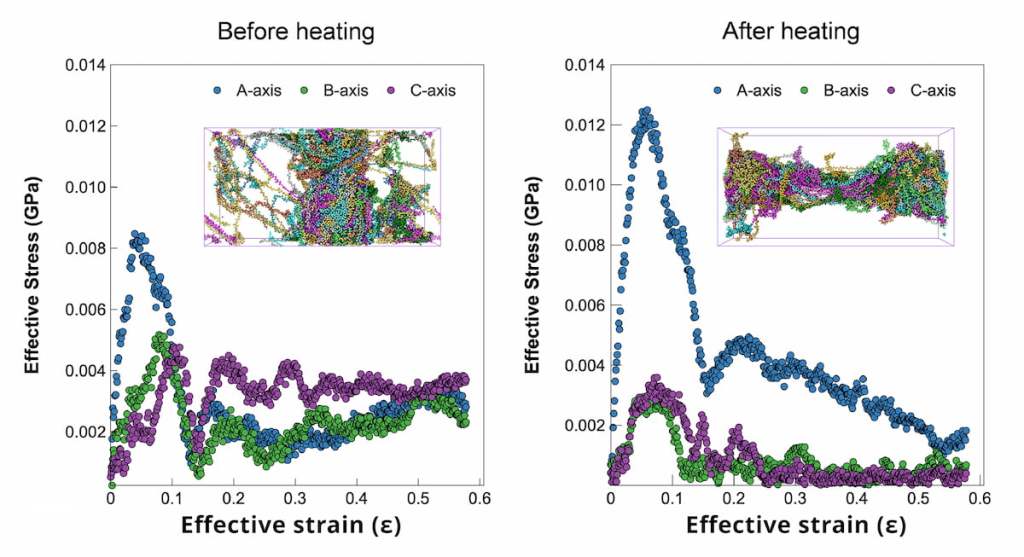Advancing sustainable food processing through integrated experimental and molecular simulation approaches
Prolamin zein and its formulations were utilized in collaborative studies between Schrödinger and University of Massachusetts (UMass) to comprehensively investigate rheological and structural properties, extrudability, textural attributes, and the underlying molecular mechanisms.
Summary
- Demonstrated the feasibility of creating meat alternatives with improved texture and reduced energy demands at up to 50% lower temperatures, opening avenues for the inclusion of heatsensitive ingredients
- Gained visual and deeper insights into ingredient interactions, molecular mechanisms behind structuring, textures, and extrudability through molecular simulations, accelerating the optimization of food formulations
- Proved the efficiency and effectiveness of integrating molecular simulations into experimental approaches
Approach
Scientists from Schrödinger and UMass carried out comprehensive studies experimentally and computationally to investigate the key properties and extrusion performance of zein-formulated meat alternatives. Experiments were done by scientists at UMass. Molecular and coarse-grained (CG) simulations with in-house developed CG Martini force field parameters were carried out using the Schrödinger Materials Science Suite, Desmond molecular dynamics engine, and OPLS4 force field.
- Explored the texture-forming properties of zein using a combination of rheological analysis and molecular dynamics simulations to understand how zein behaves under different temperature and pH conditions
- Three proteins were chosen to mix with zein (dry matter content of 20%) and subsequently heated to understand the gelling behavior of the composite at pH 3 to 6
- Screened three different types of hydrocolloids, which have previously been employed in meat analogs, to identify the optimum hydrocolloid mixture
- Studied the effect of the presence of HA-gellan gum and starch ingredients (i.e. amylose) on extrusion process parameters and textural properties
- Carried out coarse-grained molecular dynamics simulation at elevated temperatures and ideal pH to study the structures and morphologies at the molecular level and to understand the driving force for ingredient interplays
Outlook
Scientists demonstrated an efficient combined approach to develop more sustainable food formulations.1,2 By selecting the appropriate ingredients that provide tailored colloidal interactions (specifically hydrophobic ones in this instance), processing parameters can be significantly adjusted and improved (e.g., lower T) while obtaining similar textural attributes. Future research should prioritize uncovering detailed mechanisms by which hydrophobic proteins can be tailored to form anisotropic structures at low temperatures, as well as exploring new sources for these proteins.

References
-
Molecular insights into the structure forming properties of zein and a rheological comparison with hordein
Devnani B, et al. Future Foods, 2024, 10, 100503.
-
Hydrophobic plant protein-polysaccharide composite enables high moisture extrusion of anisotropic textures at low temperature
Tan NK, et al. Food Hydrocolloids, 2026, 170, 111711.
